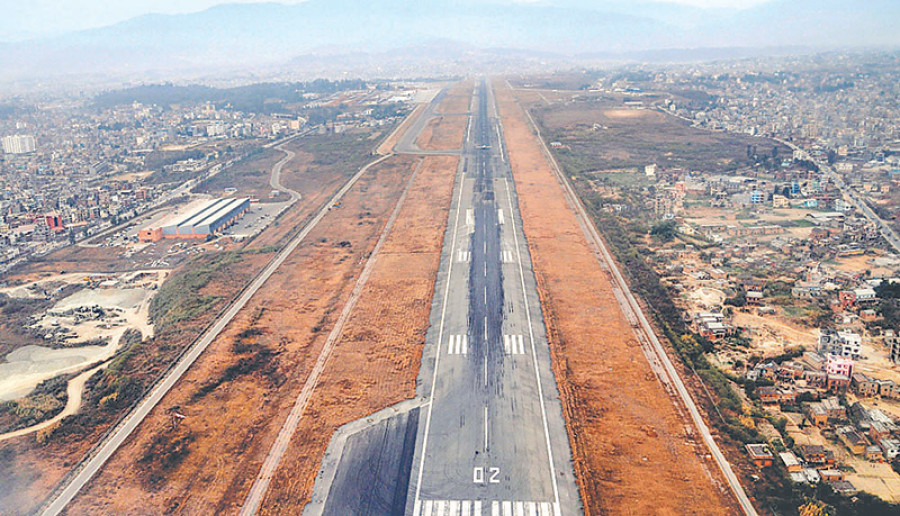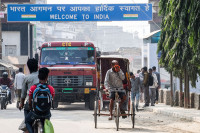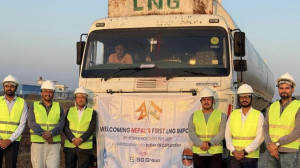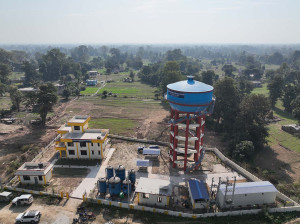Money
TIA runway extension project unravels again
The plan to extend the runway at Tribhuvan International Airport (TIA) has unravelled once again as the contractor has fled before starting work.
The plan to extend the runway at Tribhuvan International Airport (TIA) has unravelled once again as the contractor has fled before starting work.
The Civil Aviation Authority of Nepal (Caan) had awarded the contract to undertake the major airside and landside infrastructure improvement works, known as Package 1, to Shanxi Construction Engineering Group of China six months ago.
This is the second time that Caan’s runway extension plan has been left in limbo. Previously, it had hired Spanish company Constructora Sanjose to implement the project, but it had to be sent off for non-performance in December 2016.
Package 1 includes lengthening the runway by 300 metres at its southern end, or Runway 02. The project was awarded to the Chinese company last October, but it has not yet mobilized workers. The duration of the runway extension project is 21 months.
The Air Transport Capacity Enhancement Project, funded by the Asian Development Bank (ADB), had written to the Chinese contractor in the first week of March to begin work.
“So far, the contractor has not responded,” said Babu Ram Poudel, chief of the project. “As it has not responded, it seems it will not come.” He added that the project would make one last attempt to contact the contractor before beginning the process of seizing its contract bond.
As per Nepal’s Public Procurement Act, the second among the shortlisted bidders can be selected in case a contractor disappears after signing the contract. “However, we are not aware about the ADB’s rules,” said Poudel. He said that even if the Chinese contractor were to show up and begin work, it would face ‘delay penalty in construction contracts’. According to Caan officials, the contractor has baulked at undertaking the project complaining that prices of construction materials had jumped steeply.
Sanjose and Caan signed a contract for the TIA Modernisation Project, now known as Air Transport Capacity Enhancement Project, in December 2012 with the completion deadline set for March 2016.
Caan was forced to say adios to the Spanish company by officially issuing a ‘notice of termination’ on December 9, 2016 for delays.
The termination of the contract became effective on December 27, 2016.
In four years, the project recorded a meagre 17 percent physical progress. In June 2017, Caan again invited bids to get the stalled project moving. It also broke up the project undertaken by the Spanish company into four different packages.
Package 2, which includes construction of an international terminal building and associated works, has already been awarded to a Nepali contractor under national competitive bidding. Package 3 which consists of building a parallel taxiway and international apron is yet to be awarded. Package 4 consists of soil filling works on the northern side of the airport.
The completion date for the $92-million project has been pushed back to 2019. The project, jointly funded by the government ($12 million) and the Asian Development Bank ($80 million in loan and grant), hit a snag from the start as the soil to be used as filler for the expansion of the runway was not available.
Work was held up for a few days after the airport was closed when a Turkish Airlines jet crash-landed in March 2015. There were further delays due to the 2015 earthquakes and fuel shortages. After the completion of the project, TIA will be able to handle more than 5.85 million passengers annually and accommodate bigger aircraft.




 18.12°C Kathmandu
18.12°C Kathmandu












